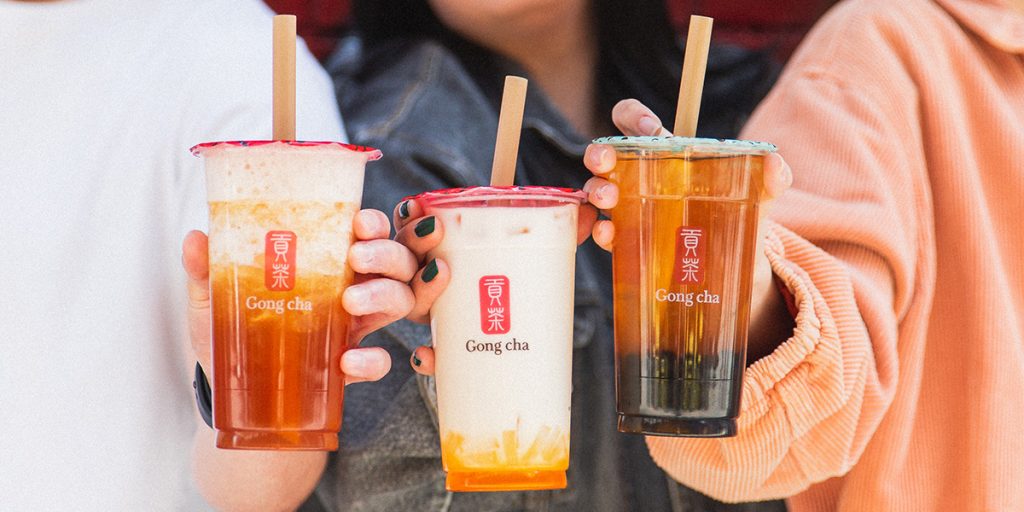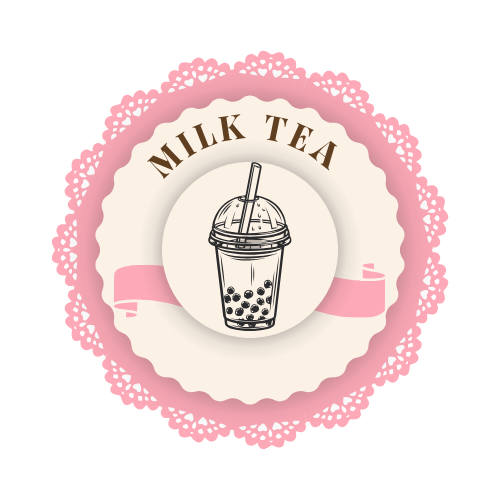Blog
Exploring Bubble Tea Culture in Different Countries
Bubble tea, also known as boba tea, has rapidly evolved from a local Taiwanese beverage to a global phenomenon. Its rise in popularity has sparked unique cultural adaptations in various countries, leading to a wide range of regional twists on this beloved drink. Whether you’re sipping on a cup of milk tea in the United States or enjoying a refreshing fruit-flavored tea in Thailand, the experience of drinking bubble tea varies significantly around the world. Let’s take a journey through some of the most interesting ways that bubble tea culture has evolved in different countries.
1. Taiwan: The Birthplace of Bubble Tea
Bubble tea originated in Taiwan in the early 1980s, and it’s here that you’ll find the most authentic experience. Known as “boba” in Taiwan, this iconic drink features tapioca pearls and a variety of tea bases, such as black tea, green tea, or oolong tea. Taiwanese bubble tea is traditionally made with a combination of milk (often sweetened condensed milk) and syrups, making it creamy and indulgent.

In Taiwan, bubble tea is a huge part of the culture. Tea shops are everywhere, and it’s common for locals to enjoy their drink as part of their daily routine, whether on the go or while relaxing with friends. Taiwan’s bubble tea scene is also known for its innovative toppings. In addition to the classic tapioca pearls, you might find options like grass jelly, red bean, or pudding.
Taiwanese bubble tea is not just a drink; it’s an experience. Many tea shops even offer a customization menu, where you can choose your tea base, level of sweetness, and even the type of milk (dairy or non-dairy). In Taiwan, bubble tea is a cultural icon that reflects the country’s emphasis on innovation and quality.
2. Hong Kong: A Local Twist on Bubble Tea
In Hong Kong, bubble tea has become an essential part of the local food scene, but it has its own unique spin. While the classic milk tea remains popular, Hong Kong has embraced “silk-smooth milk tea” (often made with evaporated milk) and other variants like HK-style milk tea and pudding milk tea. What sets Hong Kong apart is its fusion of traditional British influence and Asian tea culture.
Hong Kong is also known for its vibrant bubble tea cafés and tea houses, where you can find a mix of Western and Eastern flavors. Local variations might include drinks like egg pudding tea, where egg pudding is added as a topping, or the more indulgent black sugar milk tea, which features a rich, caramelized brown sugar syrup.
Another fun element of Hong Kong’s bubble tea culture is the focus on premium ingredients. High-end tea shops in the city are known for using single-origin teas and artisanal toppings like handmade pearls and matcha. For those who love a balance of traditional and contemporary flavors, bubble tea in Hong Kong offers a great fusion of both worlds.
3. Japan: Minimalist Meets Modern Boba
Japan’s approach to bubble tea combines the country’s love of clean aesthetics and innovative flavor profiles. While bubble tea shops are relatively newer in Japan, the demand for the drink has quickly grown. Japanese bubble tea focuses on purity and balance, with a particular emphasis on high-quality matcha and fruit-infused teas.
Matcha bubble tea, made with green tea powder, is especially popular in Japan, where it’s common to see matcha boba paired with taro pearls or red bean. The drink is often made with non-dairy milk, like soy milk or almond milk, reflecting Japan’s preference for lighter, cleaner flavors.
Japan’s bubble tea culture is also known for its clean presentation and emphasis on premium ingredients. High-end bubble tea brands in Japan often focus on artisan pearls and exquisite teas, creating a sophisticated drinking experience. There’s also a rise in fruit-based bubble teas that focus on the purity of natural flavors, such as yuzu or sakura (cherry blossom) tea, which makes for a delicate and aromatic boba drink.
4. Thailand: Tropical Fruit-Inspired Boba Delights
Thailand has taken the bubble tea culture and added its own tropical flair. Thai bubble tea is characterized by the heavy use of fresh fruits, herbs, and spices, making the drink much more vibrant and refreshing. Instead of traditional milk tea, Thai boba often includes fresh ingredients like coconut milk, mango, lychee, or even passion fruit.
Mango bubble tea is one of the most popular choices, made with fresh mango purée and coconut milk to create a creamy and tropical treat. Thai bubble tea is also distinguished by the addition of toppings like coconut jelly and popping boba, which further enhances the tropical flavor profile.
Thailand’s bubble tea culture is also influenced by the country’s street food scene, where vendors sell Thai iced teas (known as Cha Yen) along with other bubble tea-inspired drinks. These Thai versions are often less sweet than their Taiwanese counterparts, and the emphasis is on creating refreshing, light drinks that pair perfectly with the hot climate.
5. South Korea: The Rise of the “Boba Revolution”
In South Korea, bubble tea culture has taken off in the past decade, particularly in trendy areas like Gangnam and Hongdae. Much like in Taiwan and Hong Kong, milk tea is the foundation of South Korea’s bubble tea culture, but there are several distinct differences. South Korean bubble tea often incorporates the latest food trends, with options such as black sugar bubble tea (known for its sweet, caramelized flavor) and chewy tapioca pearls.

In addition to the classic milk tea, South Korea is also a fan of fruit-flavored teas, like peach, grape, and strawberry bubble tea. In contrast to the traditional Taiwanese style, Korean boba shops often make the drink less creamy, focusing on the tea’s fresh fruit flavors, making it lighter and more refreshing.
Korea is also known for its Instagram-worthy bubble tea drinks, which often come in vibrant colors and intricate layers. Whether it’s a rainbow-layered bubble tea or one topped with whipped cream, the visual appeal is an important aspect of bubble tea culture in South Korea. Many cafes have embraced the K-pop and K-beauty influence, incorporating aesthetic appeal into the drink-making process.
6. United States: The Global Fusion of Bubble Tea
In the United States, bubble tea has become a melting pot of cultural influences, combining elements from all over the world. While classic milk tea and tapioca pearls remain staples, American boba shops are known for their wide range of customizable options and flavors. In addition to traditional options, you’ll find unique creations like brown sugar boba, matcha lattes, and even coffee-flavored bubble teas.
The demand for non-dairy options has led to the rise of alternative milks, such as almond, oat, and coconut milk, making bubble tea more accessible to people with dietary restrictions. American bubble tea culture is also heavily influenced by food trends, often incorporating superfoods like chia seeds, açaí, and spirulina into bubble tea creations.
In addition to the flavor innovations, toppings in the U.S. often include popping boba in fun flavors like lychee, mango, and pomegranate. The focus is on making the drink not only delicious but also Instagrammable. Bubble tea cafes often double as hangout spots, offering unique drink combinations and a place to socialize, reflecting the U.S.’s strong café culture.
7. The Philippines: The Sweet and Creamy Boba Culture
Bubble tea in the Philippines is gaining popularity, especially among the younger generation. Known for its sweet and creamy drinks, Philippine bubble tea culture features an emphasis on indulgence and fun flavors. Brown sugar milk tea and flavored milk teas (such as avocado or ube) are especially popular, with many shops offering customized drinks tailored to local tastes.
In addition to the usual toppings, Filipino bubble tea shops often feature cheese foam or salted cream toppings, a unique twist on the drink that adds a rich, savory note to the sweetness of the milk tea. Filipino boba culture places a lot of focus on fun combinations and bold flavors, reflecting the country’s love for rich and vibrant tastes.
Conclusion: A Global Bubble Tea Journey
From the birthplace of bubble tea in Taiwan to its global expansion, bubble tea culture is thriving worldwide, with each country putting its own twist on this beloved drink. Whether it’s the classic milk tea of Taiwan, the tropical fruit flavors in Thailand, or the Instagram-worthy drinks in South Korea, bubble tea offers a rich tapestry of flavors and experiences that reflect each country’s unique approach to this popular drink. No matter where you are in the world, one thing is clear: bubble tea has become a beloved global phenomenon that brings people together through its unique taste and customizable options.


